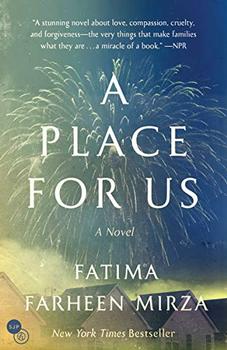Summary | Excerpt | Reading Guide | Reviews | Beyond the book | Read-Alikes | Genres & Themes | Author Bio

From the book jacket:
In April 1903, the steamship Republic
spills more than two thousand immigrants
onto Ellis Island. Among them are Diamante,
age twelve, and Vita, nine, sent by their
poor families in southern Italy to make
their way in America. Amid the chaos and
splendor of New York, the misery and
criminality of Little Italy, and the shady
tenants of Vita's father's decrepit Prince
Street boarding house, Diamante and Vita
struggle to survive, to create a new life,
and to become American. From journeys west
in search of work to journeys back to Italy
in search of their roots, to Vita's son's
encounter with his mother's home town while
serving as an army captain in World War II,
Vita touches on every aspect of the
heartbreaking and inspiring immigrant story.
Comment: Mazzucco
weaves nonfiction chapters that relate to
her own search for family members in Italy
and the USA into her fictional account of
Italian immigration to America in the early
20th century. She did
not visit the area of New York known as
Little Italy until 1997, at which time she
knew nothing of her grandfather's story - in an Italian article she describes her
impression of the area as "a tiny country squeezed
between two great powers: China and Fashion".
She went on to say:
"if Little Italy spoke of the past, SoHo spoke of the present. The neighborhood teemed with cafes, galleries and boutiques; I would have liked to live there. A real estate agency was asking $2,000 a month for a two-room apartment, but I could keep a dog. My grandfather paid $10 a month to live on the same street. But he was allowed only half a mattress, the other half being occupied by his cousin."
Her father's father, Diamante, arrived in
New York at the age of 12, more than 90 years
before her, in 1903,
with only an address:
Prince Street, where he settled in a
dilapidated building on the corner of Prince
and Elizabeth Streets. In the winter
the streets, teemed with people and animals
(the population density is estimated as
having been 1,100 people per acre, and even though the practice was officially
prohibited, many persevered in keeping farm
animals in the apartments), but in the
warmer seasons things fell strangely silent,
as most left to find farm work inland.
People kept to themselves, few of the
immigrants spoke English and Italians were
unwelcome in other parts of Manhattan; even the Italians were
strangers to each other as many only spoke
the dialect of their own village.
Most of the Italians were good, hardworking
people looking for a better life, but some
were not - and America soon grew familiar
with the term "Black Hand", and later Mafia
- within a few years the area around
Prince Street was known as "the Black Hand
block". Mellania does not know if her
grandfather knew the infamous Mafia boss Ignazio Lupo, known as
the
Wolf, but she says that even forty years
later he still remembered the thugs who
stole his girlfriend and cousin, Vita, a girl
with dark hair and deep dark eyes, who had
traveled with him to America.
Far more than a simple love
story this award winning book provides a
dramatic view of New York City from the immigrants' point of view - showing
the determination that was required in order
rise above the poverty, bigotry and limited
prospects that they so often found in "The Land of Opportunity".
![]() This review was originally published in The BookBrowse Review in October 2005, and has been updated for the
October 2006 edition.
Click here to go to this issue.
This review was originally published in The BookBrowse Review in October 2005, and has been updated for the
October 2006 edition.
Click here to go to this issue.

If you liked Vita, try these:

by Fatima Farheen Mirza
Published 2019
The first novel from Sarah Jessica Parker's new imprint, SJP for Hogarth, A Place for Us is a deeply moving and resonant story of love, identity and belonging.

by Luis Alberto Urrea
Published 2019
The definitive Mexican-American immigrant story, at once intimate and epic, from an acclaimed storyteller.
Your guide toexceptional books
BookBrowse seeks out and recommends the best in contemporary fiction and nonfiction—books that not only engage and entertain but also deepen our understanding of ourselves and the world around us.